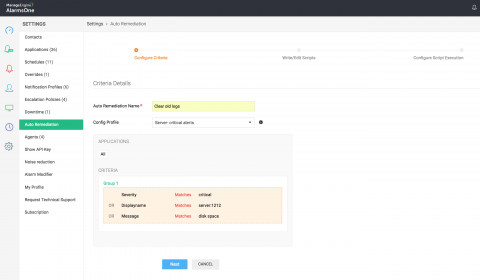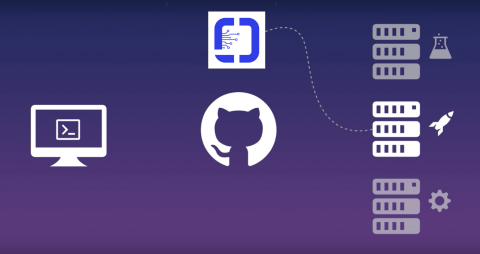Operations | Monitoring | ITSM | DevOps | Cloud
%term
AppBeat
StatusCast
Ship Code Smarter with Monitoring & Feedback
Ahoy there. Continuous shipping: a concept many companies talk about but never get around to implementing. The first post of this three-part series discussed the importance of continuous shipping, while Part 2 steered us into the depths of the process itself. We’re all hands on deck for part three, where we’ll wrap up the second half of the continuous shipping process.
Auto-remediate your IT incidents using scripts
It’s 2am. You receive a notification from your monitoring tool. A host server ran out of space and your system is down. Now you need to get out of bed and clear the log files of whatever service has filled up your available disk space. Ugh. Now, imagine that an automated action is triggered, the log files are cleared, and your system is up and running again without requiring a single thing from you. Sounds cool, right?
Jazz Up your Slack Alerts with Giphy
Looking through our company Slack channels, we use GIFs to respond to each other a lot. We use the Giphy Slack app to quickly add a witty or sarcastic response to someone (we like each other really). And we also know that a lot of our customers use our Slack integration to receive alerts, because who wants emails. Then one morning, this conversation happened – where else – but on Slack.
Data snapshot: The Lifespan of Computers and Other Tech in the Workplace
You know what they say: “Nothing lasts forever.” That’s especially true of technology. And as much as you might have loved that flip phone, 486-based tower, or perhaps that original iPad, all good things must come to an end. Whether an unfortunate tumble destroys a once-shiny-and-new device, a system stops responding as snappily as it used to, or a support agreement ends, there are many reasons to move on from older tech.
Principles for Continuous Integration
Get a decent source code management system like Github, Gitlab or Bitbucket etc. Every one uses the same code and keeps upto date with base line. this reduces the merge conflict issues. Don’t put every thing in SCM but everything you need to do a build should be in there including: test scripts, properties files, database schema, install scripts, and third party libraries
Troubleshooting Java Application Deadlocks - Diagnosing 'Application Hang' Situations
It is 2 am in the morning and you get woken up by a phone call from the helpdesk team. The helpdesk is receiving a flood of calls from application users. A business-critical partner application, powered by Java, is reported to be slow and sluggish. Users are complaining that the browser keeps spinning and eventually all they see is a ‘white page’.
Icinga on OpenAPM
Building your monitoring landscape can be a hard task. The main reason for this is the sheer amount of available solutions. Even though, each of them has their own reason for existence. One challenge during the discovery phase is to find out if the tools you selected can work together. If they have integrations for each other or if they can use the same storage backend. OpenAPM aims to help you find out which parts can work together and how you may use them in combination.











